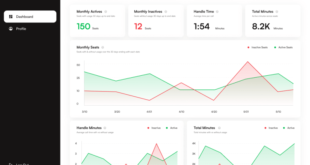
Cellular operators and governments across the world have identified 3.5GHz wireless spectrum as critical to widely deploying high-speed 5G services, as these mid band frequencies enable large quantities of data to travel quickly over long distances. Following a July-August auction of priority licenses to so-called CBRS 3.5GHz spectrum, the U.S. Federal Communications Commission today named the license winners, and they may surprise some people — the names include cellular, satellite, and cable companies, illustrating the likely coalescence of their once separate businesses in the 5G era.
Measured by dollars spent, the auction’s biggest winner was Verizon, which spent over $ 1.89 billion to acquire 557 3.5GHz licenses covering 157 U.S. counties. But the second largest spender, Dish Network — bidding as Wetterhorn Wireless — paid nearly $ 913 million for roughly 10 times the number of 3.5GHz licenses: 5,492 in total, covering 3,128 U.S. counties. Under a deal forged with T-Mobile and the U.S. government, satellite internet provider Dish recently acquired assets and network rights from rivals to become the country’s fourth-largest cellular carrier, and will likely use the 3.5GHz assets to fortify its wireless business. AT&T and T-Mobile barely participated in the auction, taking zero and eight licenses, respectively.
Cable companies rounded out the auction’s top five bidding slots. Comcast’s XF Wireless Investment arm paid nearly $ 460 million for 830 licenses across 306 counties, and Spectrum spent just over $ 464 million for 210 licenses covering 106 counties. In fifth place, Cox spent just under $ 213 million for 470 licenses covering 173 counties, the only other company to spend multiple hundreds of millions in the bidding. Some cable companies have offered mobile virtual network operator (MVNO)-style cellular services using rivals’ networks to deliver wireless services to cable TV and broadband customers; these moves suggest that the cable companies are now moving more aggressively to deploy their own cellular networks.
Back in 2018, cable company Charter Communications began testing fixed 5G services in six cities, foreshadowing a battle between cable and cellular operators for high-speed home broadband connections. Since then, T-Mobile, AT&T, and Verizon have been offering fully cellular broadband alternatives in some cities, using either “fixed wireless access” devices or mobile hotspots. Cable companies have responded to the 5G threat by promising even faster wired modems capable of delivering 10Gbps speeds, while also investing in fully wireless services.
Asian and European carriers have relied heavily on 3.5GHz-adjacent spectrum for their early 5G deployments, boasting average speeds ranging from 150 to 400Mbps, depending on the country and available spectrum bandwidth. After working out a deal with prior U.S. users of the spectrum, the FCC belatedly made 3.5GHz licenses available to U.S. bidders on a “priority” basis, enabling military users to co-opt the spectrum if needed under specific circumstances. The FCC also plans to auction additional spectrum adjacent to the CBRS band over the next year and a half, enabling interested carriers to either augment their holdings with larger contiguous spectrum blocks or let additional parties gain access to the globally popular frequencies.



